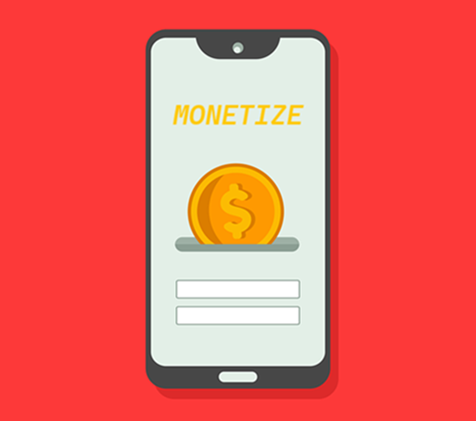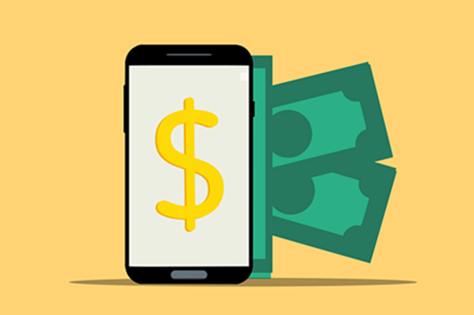With mobile app usage at an all-time high, businesses and developers are constantly looking for ways to turn downloads into dollars. A well-designed mobile app can attract thousands—even millions—of users, but without a solid monetization strategy, it’s just an expensive project with no financial return.
Monetizing an app requires a strategic approach that balances revenue generation with user experience. Whether you’re building a gaming app, a productivity tool, or an e-commerce platform, choosing the right revenue model is key. In this guide, we’ll explore the most effective monetization strategies for mobile applications, breaking down their benefits and challenges, so you can make lucrative choices for your business.
Understanding mobile App monetization
Monetization is the process of generating revenue from your mobile app. While some apps are designed to be completely free, most successful apps implement at least one monetization strategy to ensure long-term profitability.
Choosing the right strategy depends on factors like your target audience, app functionality and market trends. It’s not just about making money—it’s about creating a sustainable revenue stream without compromising user experience.
1. In-app purchases (IAP)
One of the most common ways to monetize mobile apps is through in-app purchases. This model allows users to buy virtual goods, premium content, or features, directly within the app.
Types of in-app purchases:
- Consumable Purchases – One-time use items like extra game lives, virtual currency, or power-ups.
- Non-Consumable Purchases – Permanent upgrades such as an ad-free experience or a premium feature.
- Subscription-Based Purchases – Recurring payments for ongoing access to exclusive content or features (covered in the next section).

Benefits:
- Direct revenue generation from engaged users.
- Encourages long-term engagement and retention.
Challenges:
- Requires a loyal user base to be profitable.
- App store commissions (Apple and Google take up to 30% of each transaction).
2. Subscription-based model
The subscription model is becoming increasingly popular, especially for apps that offer ongoing value, such as streaming services, fitness apps, or productivity tools.
Types of subscription models:
- Freemium Model – Users get free basic features but must subscribe for premium features (e.g., Spotify, Dropbox).
- Premium Subscription – Users pay a recurring fee to access the full version of the app (e.g., Netflix, Adobe Creative Cloud).
Benefits:
- Recurring revenue stream that provides financial stability.
- Increases customer lifetime value (LTV).
Challenges:
- High user expectations—if the app isn’t continuously updated or valuable, users will cancel their subscriptions.
- Requires strong marketing efforts to attract and retain paying subscribers.
Find out what are the key differences between iOS and Android apps.
3. Advertising revenue model
If you’re offering a free app, ads can be a great way to generate revenue. The key is to integrate ads in a way that doesn’t disrupt the user experience.
Types of in-app ads:
- Banner Ads – Displayed at the top or bottom of the app screen.
- Interstitial Ads – Full-screen ads that appear at natural breaks in the app.
- Rewarded Ads – Users voluntarily watch ads to earn in-app rewards (e.g., extra game lives, in-game currency).
- Native Ads – Ads that blend seamlessly into the app’s design and content.
Benefits:
- No cost to users, making it easier to attract a larger audience.
- Works well for high-traffic apps.
Challenges:
- Too many ads can frustrate users and lead to app uninstalls.
- Requires a large user base to generate substantial revenue.
4. Affiliate marketing & sponsorships
Affiliate marketing allows you to earn commissions by promoting third-party products or services within your app. Sponsorships involve partnering with brands that align with your app’s audience.

Examples:
- A fitness app promoting workout gear through affiliate links.
- A travel app featuring hotel or airline partners.
- A local news app partnering with local businesses for sponsored content.
Benefits:
- Passive income stream without disrupting the app experience.
- Can enhance credibility when partnered with relevant brands.
Challenges:
- Requires strong partnerships with brands that align with your audience.
- Users may feel overwhelmed if promotions feel excessive.
Read more on cross-platform and native app development.
Choosing the right monetization strategy
Selecting the best monetization model depends on several factors:
- App Category: Gaming apps often succeed with in-app purchases, while news apps benefit from subscriptions or ads.
- Target Audience: Business users may prefer a subscription model, while casual users may be more receptive to ads.
- Market Trends: Staying up-to-date with industry trends helps to adapt your strategy accordingly.
Many successful apps are of hybrid model that uses a combination of monetization strategies to maximize revenue. For example:
- A freemium app with in-app purchases for additional features.
- A free app with ads, offering a paid ad-free version as an upgrade.
Monetizing a mobile app requires a thoughtful approach that can create a sustainable source of revenue without sacrificing user experience. Whether you choose in-app purchases, subscriptions, ads, or a combination of models, the key is to test, analyze and refine your strategy based on user behaviour and market trends.
By implementing the right monetization plan, you can turn your app into a profitable venture while keeping users engaged and satisfied. If you are looking to develop a mobile app for your business idea, contact us at Wedfx.
